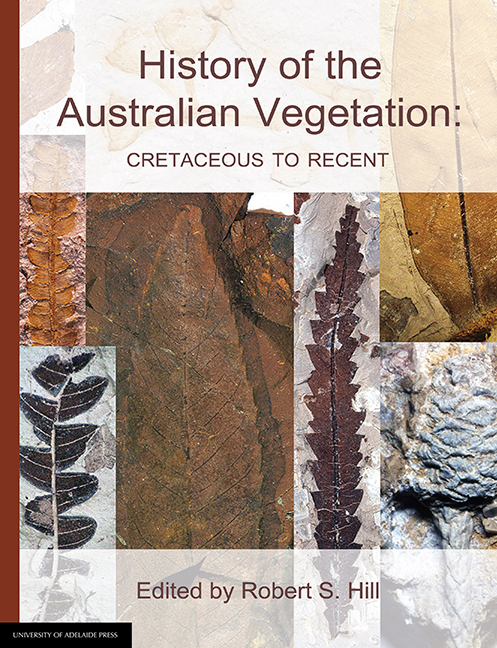Book contents
- Frontmatter
- Contents
- List of contributors
- Introduction to the 2017 edition
- 1 The Australian fossil plant record: an introduction
- 2 Maps of late Mesozoic-Cenozoic Gondwana break-up: some palaeogeographical implications
- 3 The background: 144 million years of Australian palaeoclimate and palaeogeography
- 4 Palaeobotanical evidence for Tertiary climates
- 5 Landscapes of Australia: their nature and evolution
- 6 Patterns in the history of Australia's mammals and inferences about palaeohabitats
- 7 Australian Tertiary phytogeography: evidence from palynology
- 8 Cretaceous vegetation: the microfossil record
- 9 Cretaceous vegetation: the macrofossil record
- 10 Early Tertiary vegetation: evidence from spores and pollen
- 11 The early Tertiary macrofloras of continental Australia
- 12 Cenozoic vegetation in Tasmania: macrofossil evidence
- 13 The Neogene: a period of transition
- 14 The Oligo-Miocene coal floras of southeastern Australia
- 15 Quaternary vegetation
- 16 The history of selected Australian taxa
- Taxonomic index
- General index
3 - The background: 144 million years of Australian palaeoclimate and palaeogeography
Published online by Cambridge University Press: 25 July 2017
- Frontmatter
- Contents
- List of contributors
- Introduction to the 2017 edition
- 1 The Australian fossil plant record: an introduction
- 2 Maps of late Mesozoic-Cenozoic Gondwana break-up: some palaeogeographical implications
- 3 The background: 144 million years of Australian palaeoclimate and palaeogeography
- 4 Palaeobotanical evidence for Tertiary climates
- 5 Landscapes of Australia: their nature and evolution
- 6 Patterns in the history of Australia's mammals and inferences about palaeohabitats
- 7 Australian Tertiary phytogeography: evidence from palynology
- 8 Cretaceous vegetation: the microfossil record
- 9 Cretaceous vegetation: the macrofossil record
- 10 Early Tertiary vegetation: evidence from spores and pollen
- 11 The early Tertiary macrofloras of continental Australia
- 12 Cenozoic vegetation in Tasmania: macrofossil evidence
- 13 The Neogene: a period of transition
- 14 The Oligo-Miocene coal floras of southeastern Australia
- 15 Quaternary vegetation
- 16 The history of selected Australian taxa
- Taxonomic index
- General index
Summary
The preface to Pittock et al. (1978) discussed the question 'What is climate? (without saying so) and refers to its main feature - its variability. And this was in relation to modern climate! How difficult then to address the question of palaeoclimate. We must recognise and accept that any reconstruction of palaeoclimate is at best an approximation, and, even then, is averaged over time scales of hundreds of thousands to millions of years, a length in which modern 'short term5 variability is not decipherable. Many of the elements measured as part of modern climate are not recognisable in the geological record or must be implied from various features of the record. Although this may seem a somewhat negative way to introduce the subject, there are several firm conclusions that can be made about past climates and the way in which they have changed.
The purposes of this chapter are:
1. To review the climate of Australia over the last 144 million years (Ma) (Cretaceous to Recent).
2. To provide a background for other studies of Australian fauna and flora over the same interval.
3. To stimulate discussion on the directions for further research into the Cretaceous- Cenozoic of Australia.
The figure of 144 million years is taken because that is what is understood to be the age of the boundary between the Jurassic and Cretaceous periods. It is based on our understanding of that boundary dated by isotopic methods and using constants that are accepted at present. It is not an absolute date and can be expected to vary as our understanding of the isotopic dating method improves. This range of time is taken because it is the one during which Australia underwent its major change from part of a supercontinent (Gondwana), to an isolated interval in which the modern fauna and flora evolved, to another when it is colliding with Asia and also undergoing changes associated with the influence of humanity.
- Type
- Chapter
- Information
- History of the Australian VegetationCretaceous to Recent, pp. 14 - 43Publisher: The University of Adelaide PressPrint publication year: 2017



